At every opening held at Sexauer gallery you hear a whispered or hushed question: “Have you seen the salon?”. Regardless of the answer, an enthusiastic exaltation of the space follows. The home is, increasingly, a place for the exhausted soul to stop and rest before submitting to another day in the capitalist machine. Sexauer’s salon provides exactly that niche semblance of home, where time stands still. Berlin Art Link was granted the pleasure of visiting the infamous salon and speaking to the gallerist Jan-Philipp Sexauer about its role in his working environment.
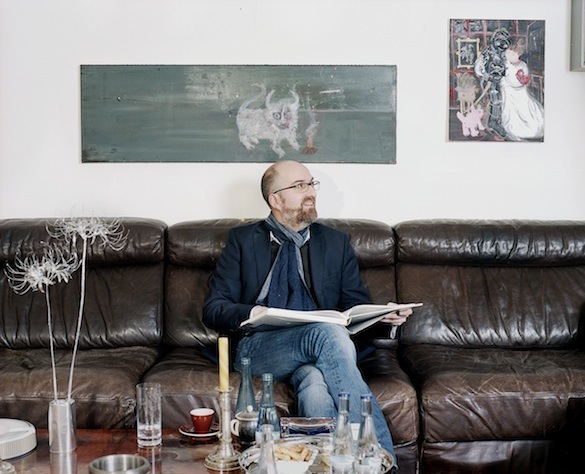
Penny Rafferty: How did the concept of your salon evolve?
Jan-Philipp Sexauer: The salon has been here since the start of the gallery. It used to be mostly my own collection but now I showcase artists from the gallery as well, such as Futo Akiyoshi, Gerrit Engel and Ornella Engel. It changes with every show so it acts as an extension of the white cube: perhaps a more livable version. There is only one piece that has been on display since 2013, the turquoise cabinet of Jay Gard, but it’s only an element of the original installation he made from the first show I created here.
You know 90% of art goes somewhere after its brief life in the white cube, and it’s not usually to the museum. The salon allows us to see how the works live together. Personally I think only 10% of works really need to have a huge amount of space to breathe, I am more interested in the collisions and thoughts they produce in conversation with each other. This is why the salon focuses on the traditional technique of Petersburger Hängung – each wall is filled, frame-to-frame – the works speak and reflect with each other. Take Philip Grözinger’s paintings: they are packed to the brim with ideas but they don’t take anything away from Akiyoshi’s delicate golden rooms when they are placed inches from each other. In fact, they make quite a good pair.
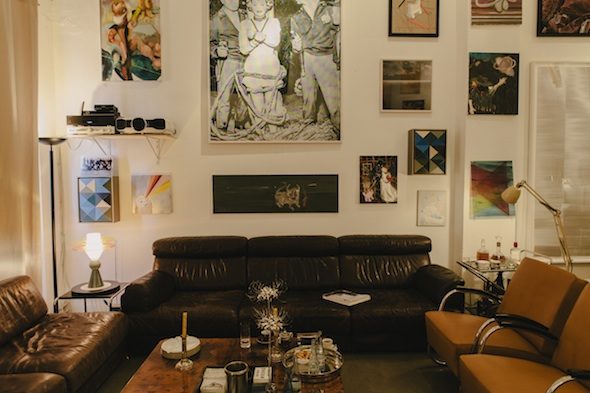
PR: Your taste seems very eclectic.
JPS: Yes, my focus is always shifting. I have always been the type that is interested in a lot of things – music, literature, philosophy from all periods in history – but you can’t master everything, which is why I turned to the gallery. I used to be a lawyer but it was not my passion, every day I had to solve people’s problems. Here you are always creating and I really enjoy seeing the interpretations of other people.
PR: The salon seems timeless, it’s hard to pin point an era in here.
JPS: History is very similar to visual art it allows you to travel through space and time and opens your mind. The salon is designed to be timeless too. It could be 6am or 6pm: there is no natural light to guide you and I think this is vital to be able to relax without the constraints of time.
PR: But most of the work seems to be contemporary in nature.
JPS: People always assume things are new, they see the past as the last 50 years, but actually there is nothing really “new”. It’s all the same things just re-interpreted. Look at what is dubbed a post-modern novel today, but then read Don Quixote by Miguel de Cervantes: this is truly post-modern, yet it was written in 1605. It’s fascinating how many ideas are in the world and have always been there. They entice so many possibilities, focuses and ranges but we are always obsessed with looking for the new. But, yes, in a way all these works are contemporary. I’m sure there is something that holds them all together as a collection but I’m not sure what it is. I think it’s emotional.
PR: How did you start collecting?
JPS: Well I started with literature, then music, then art. The access to literature is more simple you, just pick up a book. But to see great art you must have some understanding of what to see and where to see it. The initial pieces were given to me by friends or people I knew but, in fact, the very first piece I collected was when I was eighteen. I had just passed my driving test and I was at a party and offered to give this guy a lift home. In repayment he gave me an artwork of his. But the first piece I bought was in the early 90’s from Jonas Burgert. I think that it was about 1500 DM. This was when he was an abstract painter totally opposite to his style now. It’s funny because now he owns this whole unit. I rent from him but at the time he needed money and I had a little, so we cut a deal.
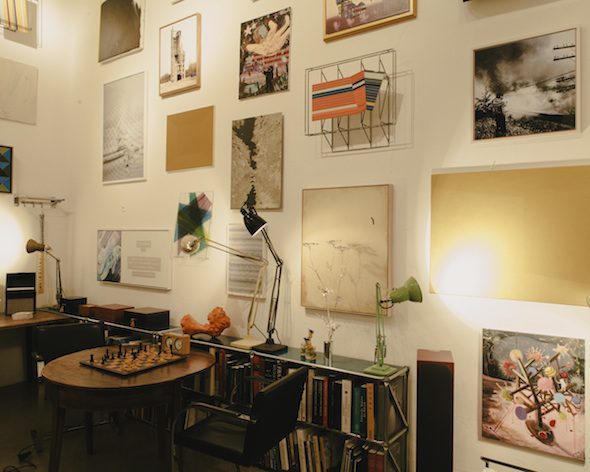
PR: If you could have any piece in your collection what would it be?
JPS: I have difficulties with this question because there is nothing I really need to have, I mean there are things I love and things I like but really need, no. I personally love it when works are in a museum where everyone can see them so I don’t have this passion to collect. I don’t think I am very typical in this way.
Well actually maybe I would like to have one of Duchamp’s chess portraits. But let’s take him as an example: he is an important figure in the art world but if I collect him I take his message out of circulation. How many pieces are locked away like that? However I do believe the market is valuable for art and artists as it allows for the continuation of production. For me personally, I just want to live this short time on Earth with people and things around me that I like – it’s really very banal and simple but it’s all I want.
PR: So art acts as a social catalyst for you?
JPS: Well art has always been intertwined with my social life but really all I want to do is to learn till the day I die. The arts are one way to do that. There are so many different truths in the world and then there is no real truth, I love to lose myself in art and always will. The salon is created for that purpose.
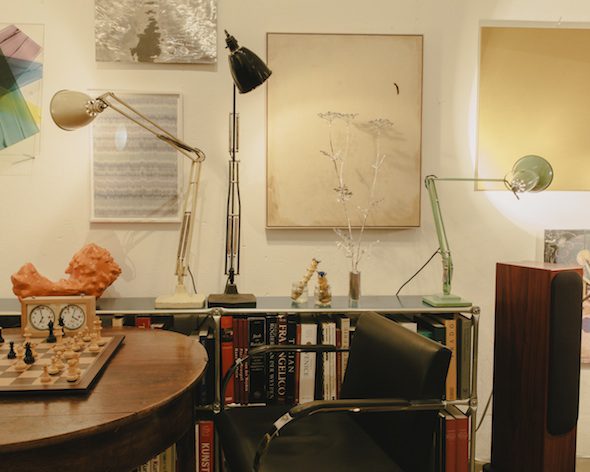
PR: Many people today spend more time at work than at home. Is this a way you reconcile your professional and leisure space?
JPS: I wouldn’t say that the salon represents my home, it has a similar function to the white cube but it’s a different counterpart. It has a more comforting pace than the gallery: you can hang out, listen to music, drink coffee and be with the pieces. It mimics the décor of a home and when guests come they should certainly feel at home.
PR: So what’s home to you?
JPS: I try to feel at home wherever I am, I even re-arrange hotel rooms to feel more comfortable. But really home for me is a calm space, that is relaxing and personal.
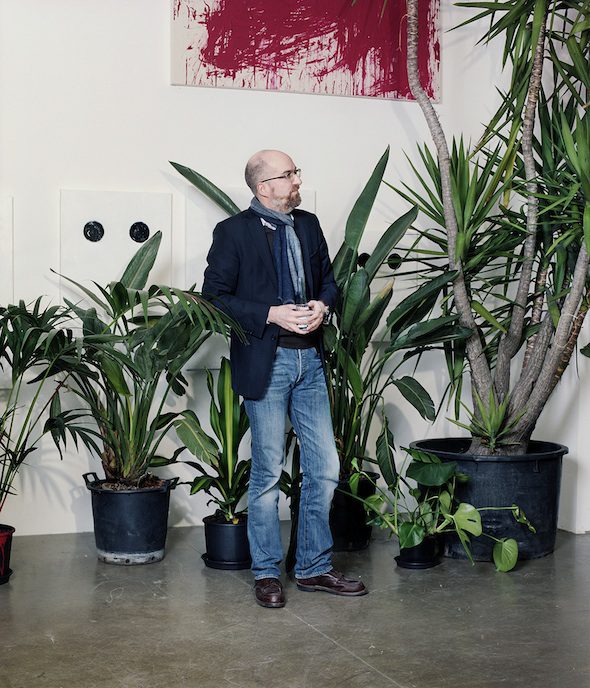
Exhibition
SEXAUER GALLERY
Jofroi Amaral, Toshihiko Mitsuya (with June14), Alexander Skorobogatov: ‘White Cube Jungle’
Exhibition: Mar. 11–Apr. 09, 2016
Streustraße 90, 13086 Berlin, click here for map





















